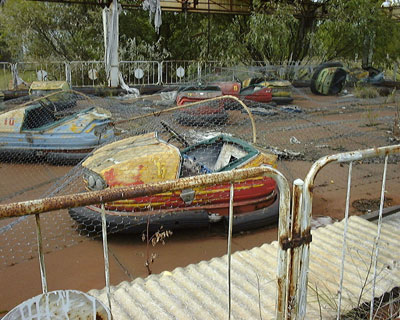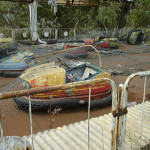 On April 26, 1986, an explosion occurred at the No. 4 reactor of the nuclear power station at Chernobyl, in the then-Soviet state of Ukraine. It was the worst disaster in the history of nuclear energy production. The radiation spread by the explosion resulted in thousands of deaths in Ukraine, Russia and surrounding nations by 2006 [source: Greenpeace]. Soviet officials were criticized for not moving quickly enough to warn residents of the danger. Cities were eventually evacuated, and the government constructed an 18-mile exclusion zone — a closed-off area surrounding the decommissioned power plant.
On April 26, 1986, an explosion occurred at the No. 4 reactor of the nuclear power station at Chernobyl, in the then-Soviet state of Ukraine. It was the worst disaster in the history of nuclear energy production. The radiation spread by the explosion resulted in thousands of deaths in Ukraine, Russia and surrounding nations by 2006 [source: Greenpeace]. Soviet officials were criticized for not moving quickly enough to warn residents of the danger. Cities were eventually evacuated, and the government constructed an 18-mile exclusion zone — a closed-off area surrounding the decommissioned power plant.
The town where most of the employees of the Chernobyl plant lived, Prypiat, falls well within the exclusion zone. The city of 44,000 people is located less than 3 miles from the site of the disaster, and it was evacuated within 60 hours of the accident [source: New Scientist]. It looks like Prypiat will remain abandoned for some time to come; it’s estimated that the area won’t be safe for human habitation for hundreds of years due to radiation [source: BBC].
A few intrepid souls have ignored the dangers that lie within the exclusion zone and entered Prypiat. They recorded and reported on the sights, and some have even looted the town. Prypiat’s become overgrown with vegetation: The soccer stadium has been replaced by a forest. Wildlife like bears and deer wander inside crumbling buildings. Prypiat looks like it’s frozen in time. Beds are still made with sheets, desks crowd old school rooms and decorations for a May Day celebration still adorn the town [source: Spiegel]. Prypiat was once a fairly bustling city, with high-rise buildings and an amusement park. Today, the Ferris wheel stands still, and bumper cars rust. Vegetation is reclaiming the area that was once covered by concrete and humans.
Originally posted 2016-03-07 20:28:03. Republished by Blog Post Promoter

![abandoned-city-2-Prypiat-Ukraine[1]](https://coolinterestingnews.com/wp-content/uploads/2012/07/abandoned-city-2-prypiat-ukraine1.jpg)













